If the Royal Navy is to reach its 2040 goals, it must adapt faster and embrace cutting-edge technology, a senior naval officer has said.
Vice Admiral Martin Connell, Second Sea Lord and Deputy Chief of the Naval Staff, addressed this year’s Navy Leaders Combined Naval Event, stating: “Navy 2040 will deliver the Navy our nation needs and upon which our security and prosperity will increasingly rely.”
Appointed Second Sea Lord in January 2022, Vice Admiral Connell is responsible for delivering the Royal Navy’s future capabilities, strategy, and long-term programme.
During his speech, Vice Admiral Connell outlined the expectations for Navy 2040: “We need a maritime technological ecosystem fit for the 21st century, because we clearly cannot go it alone or accept things as they are. Our vision is for a more modern Royal Navy, one that continues to prioritise investment in our nuclear deterrent, that protects our nation’s interests, that is ready to fight and win with our NATO allies. [One] that isn’t afraid to pioneer and embrace cutting-edge technologies, and one that, of course, continues to have excellent people at its heart.”
He emphasised the need for rapid adaptation: “To do this we aim to adapt faster. We will need to work, train and educate ourselves differently. And we’re examining our new priorities.”
Vice Admiral Connell highlighted that the Navy of 2040 will feature increased effective mass through accelerated shipbuilding and the integration of uncrewed underwater, surface, and air vehicles. He also stressed the prioritisation of offensive strike capability.
Addressing the role of artificial intelligence (AI), Vice Admiral Connell expressed his enthusiasm for the opportunities it presents:
“If applied correctly, it has the potential to create dynamic new benchmarks for accuracy, efficiency, and lethality.” However, he noted that the Navy’s adoption of AI feels slow compared to changes in personal technology: “When I ask some of our own industry partners how they are incorporating data and AI into their own product design and learning today, if I’m honest, it still feels a little underwhelming.”
I want to hear less about future potential and more about direct action… we need to be quicker to adapt. Clearly the Royal Navy does not have all the answers. It is only by working with all of our industry partners that we will be able to develop these world-beating capabilities together.”




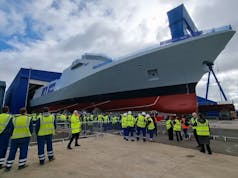
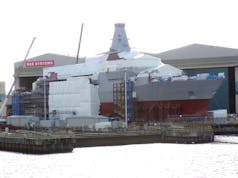

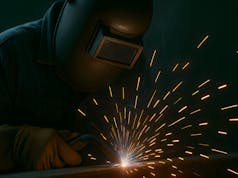



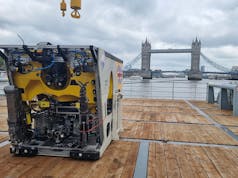
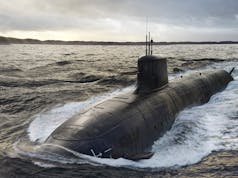

“Second Sea Lord”….time to get with the times eh? Progress technologically, but also culturally. Too many outdated wooden wall titles and attitudes.
Don’t agree. History and tradition is part of what gives the troops pride in their service. God forbid we change it to Deputy Director or some other bland corporate title.
Here here.
The RN has a long and proud history, and tradition must be maintained. What other navy in the world can boast of forebears like Nelson?
A Rose by any other name would smell just as sweet
It’s a legacy of when we understood the importance of sea power to our nation stood alongside faith in God and justice before the law – the only non-heriditary members of the House of Lords were judges, bishops and admirals.
You clearly didn’t grow up where I grew up where at every level you had masons for example interacting in the police, politicians (the local Labour Party gave land for a Lodge indeed) and magistrates offering and taking bungs because they had said influence to get the ‘justice’ the defendants naturally preferred if they just pay enough for it. Mind you unless the corrupt police and Magistrates had reason to fear the defendants and the defendants weren’t themselves Masons, it almost inevitably went into pockets without any of the promised words in the proverbial ear. Of course the traditional media rarely questioned it because it suited it to do so for similar reasons. I guess some think that is justice before God mind, just as the villains before the Horizon Enquiry think justice is just for those with effective influence rather than any innate morality coming into the equation. Some system that was or indeed still is now at times, far easier for it to get into the public domain mind.
Second Sea Commissar?
Unfair comment you should encompass traditions and history! We have lost to many to the pink and fluffy!!!
Agree with you totally.
Roll on 2040 then!
The biggest problem we and other navies face is the design and build timescales for any new platform. It is taking BAE @ 8 years to build a type 26,, falling to @5 years for the last in class. Astute has taken between 9 and 11 years each. This is longer than the duration of WW2. So not only can we not replace any losses in any sensible timeframe but any new innovative design will take a decade or more from conception to delivery. The only way to achieve faster adaptation is to have platforms flexible enough to allow rapid fitting of new sensors and weapons.
Land systems have similarly protracted development and delivery schedules. New combat aircraft take even longer.
Meanwhile China can churn out a major surface combatant in ~ 2 years.
If the build standards are a carry over from Chinas commercial shipyards they will last about 2 years as well!
Throw money and people at the ship building task and you can do it quicker…however it costs .
or.
Cut everyone’s wages and throw people at it. Cost is managed but nobody is going to work well for less money.
Design and build smarter. Build in flexibility and modular from the start. However modularity does not give you resilience. You still need to develop build and interface modules.
There are no easy answers just less difficult ones
You mentioned elsewhere that buying commercial was the way to go for some things. Good price, easy maintenence and low manning.
I am not an expert but would you care to give us a “for instance”, as a man who knows.
The pipeline protection vessels obviously but could this be extended for survey or even resupply? Or do things like that need to be more ‘navy built’?
AA
FSS ships for starters are highly specialised vessels you cannot just use a STUFT cargo vessel.
Hi Daniele- I always felt STUFT was an awful acronym. Pity those poor defenceless vessels in the Falklands conflict – thinking in of the Atlantic Conveyer.
That is a British,Australian,Canadian, USA problem.
No doubt more money in the pot ,would help Admiral 😦 🇬🇧
I would suggest that the Navy will need to adapt to a changing threat environment considerably before 2040.
Indeed, 2030 could be too late.
The USA could either fall into civil was or effectively leave Europe to defend itself & support UKR &/or China could invade Taiwan. Plus any sneaky plans other regimes may be hatching. Complacency is deadly when you’ve already trashed virtually every defence capability.
Drone developments are not measured in years but months and even weeks in some cases. Identifying drones as the biggest threat to both sea and land operations means time is not on our side. Drone development is now so fast that countermeasures are in danger of becoming swamped and struggling to keep up. Vessel flexibility will be an essential ingredient in warship design and adaptation of existing designs is almost inevitable. I can envisage a total fleet of unique vessels none of which are the same, apart from the basic hull structures and all because of technology and its unstoppable appetite for evolution.
Yet the Royal Navy and RAF have no drone aircraft that can operate as refuelers, larger drone weapons platforms etc. The US has developed a stealth drone, tankers, sensor platforms and I read their first attempt at a high altitude radar system. All of which can operate on a carrier and the drone helicopter can operate off a Destroyer etc.
I know we are not the US with the US defence budget. The Royal Navy has started and scrapped its own system within a few years and not going any further with it. Shameful, really shameful.
I see the Yemenis shot yet down another US Predator. Ours won’t last 5 minutes in any real conflict, one wonders if indeed they are a white elephant, an expensive one at that. Not sure if they are safe from being taken out by Channel smugglers.
A Predator is nothing more than a 1920’s aircraft in performance, maybe can go a bit higher but that is it.
Any SAM with enough range/altitude will not have problems downing it.
any ideas on the weapon systems they used Spy?
2040.
Meanwhile …
He doesn’t mention a bigger navy. Only more mass via UAS,UAS,USS.
Yes. Less ships to save money and an inadequate number of UAS etc to supposedly make up for it…
AA
Well, instead of aiming to have a fully operational navy by 2030 which is where we’ve been for the last few years we can pretend we’re aiming for 2040. Joy.
A2020 in 2010. A2020R in 2015, Future Force 2030 in, whenever it was recently.
It is always about tomorrow mate, with a nice Carrot dangled and fat cat contracts to industry.
Meanwhile, the cuts continue.
No doubt another round of cuts in 2025 called a Strategic European Arms Unification and Diversity Programme for the 2050’s 😏
Too true DM! 😏
2040 goals?…how about getting to 2030 first!? And any goals for next year? lol 😆 I get it, long, medium, short…